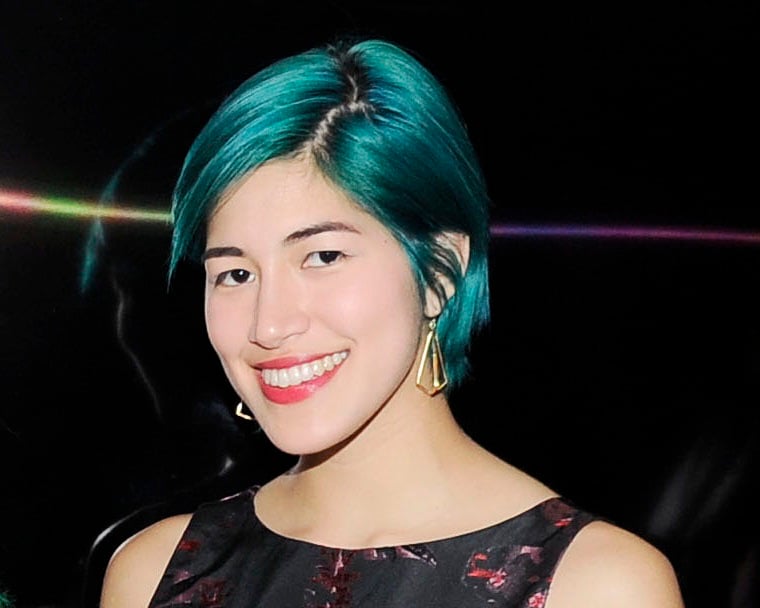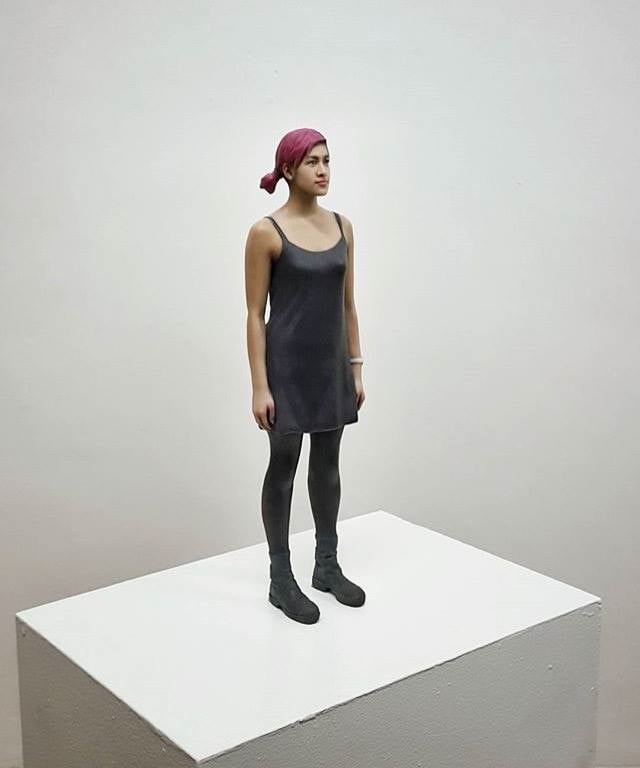Events and Parties
Emma Sulkowicz’s Sold-Out Performance Gets Intimate
This is not your typical party.

This is not your typical party.

Sarah Cascone

It was not your usual party. That was clear from the onset at I.D., a three-night performance art piece from Emma Sulkowicz at arts venue JACK, in Clinton Hill, Brooklyn.
Assorted guests were waiting their turn to speak to Sulkowicz, who had promised to interact one-on-one with everyone there.
When I entered the tin foil-covered space, I was informed that I could not take photos or videos. I explained that I was a journalist on assignment, and asked if there could be an exception made. No, I was told: “Part of the art is that there won’t be any photo documentation of this place.”
Instead, Sulkowicz greeted me warmly, and put a paper wristband on my arm. She was already wearing a number of them on her wrist, and asked me to add one more. After we spoke, I would write what I thought she thought about me on my wristband, and she would write what she thought I thought about her on hers—defining our identities by a brief interaction conducted over the loud beat of the club music.
If Sulkowicz had one identity that night, it was the consummate hostess, flitting about the space to make sure she greeted each and everyone of her guests. There were only about three dozen at the sold-out event on October 20, otherwise the artist would not have had time to carry out her intimate mission.
https://www.instagram.com/p/BLrWc1jjtl7/
Instead of the intimacy advertised, however, the vibe felt strange. One attendee described it as equal parts awkward middle school party, artistic dick-measuring contest, and general curiosity. Guests were largely clumped on one half of the room, perched on a structure that is probably unfolded and used as a stage during other programming. Against the other wall, three girls sat on the floor, completely engaged with their phones.
Most seemed eager for their turn with the artist, lighting up when she tapped them on the shoulder for a chat.
Others were not necessarily impressed, it seems. “It’s self centered—now you have to wait to talk to me?” complained one attendee. “If this is about engagement, I’m really not engaged.”

Emma Sulkowicz, Mattress Performance, Carry That Weight, 2014–15. Courtesy of Andrew Burton/Getty.
Like all durational performance art, I.D. seemed exhausting. To be friendly and welcoming to so many people, most of them strangers, without ever getting beyond the basic pleasantries that are covered in the first few minutes of a conversation, is necessarily emotionally draining. “It would be a good way to get over your social anxiety,” one guest commented.
If Sulkowicz cares what people think about her, she is certainly doing her best to come to terms with it. After exploding onto the scene in 2014 with her senior thesis project at New York’s Columbia University (she carried a dorm-issued mattress around campus for the duration of her senior year in protests of how the school had handled her rape allegations), expectations have been almost impossibly high for the young performance artist.
Carry That Weight (Mattress Performance) carried the unique burden of being both a thoughtful, compelling work that tapped into the history of feminist performance art, and a bonafide cultural phenomenon that succinctly captured the frustration, anger, and need for empowerment felt by women across the nation.
“I knew so many girls who had gone through similar experiences, but they weren’t able to speak out,” said one guest, who graduated from Columbia’s sister school, Barnard, the same year as Sulkowicz. “She gave them a voice.”
Where do you go from there? When Sulkowicz graduated in May 2015, carrying her mattress across the stage in defiance of the school’s administration, artnet News wondered about her chances of sustained art world success.
A year and a half later, that question might not be answered, but it’s clear that Sulkowicz, who is currently studying studio art in the Whitney Museum of American Art’s Independent Study Program, is serious about her work.
It’s hard to imagine what it must have been like for her: Dropped into the national consciousness and forced to speak at length about both deeply personal and legally-sensitive matters (her accused rapist filed a lawsuit, although Sulkowicz assured me she never mentioned him by name to the press), the highly-visible action of carrying a mattress made her a subject of inquiry wherever she went.

Emma Sulkowicz In-Action Figure (2016). Courtesy of the artist and Coagula Curatorial, Los Angeles.
It’s no wonder that at her first gallery show in Los Angeles, Sulkowicz created a robot, the Emmatron, to answer questions she’d grown tired of hearing.
I.D. seems to be similarly-rooted. Although piece explores the concept of self-selected identities through the construct of a party, one would assume that Sulkowicz was inspired in part by the way she was publicly judged when she was thrust into the spotlight with Carry That Weight.
As is all too often the case with women who dare to take a stand, Sulkowicz was the subject of virulent criticism—but where some called her a liar, or worse, and reduced her to “the mattress girl”, she became the very public face of a movement. This is a lot for one person to bear, but instead of buckling under the weight, she has kept moving forward.

Emma Sulkowicz in her Columbia studio, with the “Rules of Engagement” for Mattress Performance: Carry That Weight.
Photo: Wikimedia Commons.
A key aspect of Carry That Weight is the artist’s studio, which she turned into a canvas for the project manifesto, her “rules of engagement” painted on the walls in big black letters.
Those intellectual underpinnings took center stage for the climax of the I.D. performance, when Sulkowicz brought out chairs, forming rows for party-goers to sit in while she addressed her audience.
“You’ve done more than keep me from performing to an empty room,” she said, thanking everyone from helping her create the piece. “Tonight we are all performer and material, interpreter and interpreted.”
She spoke of the concept of identity as armor, something that we regularly change according to the circumstances, and may use to protect ourselves from having to come to terms with how we really feel about ourselves. “The white lights at the end of the party illuminates two equally valid identities,” said Sulkowicz. “The one you identified with during the party, and the one you might feel now.”
Her speech heavily quoted French psychoanalyst Jacques Lacan, novelist Justin Torres (who wrote after the Orlando night club shooting for the Washington Post), gender studies scholar Eve Kosofsky Sedgwick, and art historian and Barnard contemporary art professor Rosalyn Deutsche. It was, at times, dense and inaccessible, like an overly-annotated dissertation.
On my wristband, I wrote that I thought Sulkowicz thought I was smart (even it felt conceited to do so). Sulkowicz, too, is obviously intelligent. I wish, however, that she’d felt confident enough to stick to her own words for her concluding presentation, rather than rely on academic armor.
This side of I.D. may have been an attempt to depersonalize the work, to make it less about the artist, and more about a shared human experience. Her work resonates, however, because it is raw and personal, defined by her own unique experiences.
“If the party lasted forever, we would never feel vulnerable,” Sulkowicz told her audience. This vulnerability is something the artist also needs to reconsider, and take to heart.